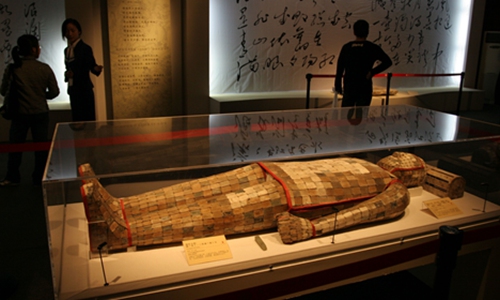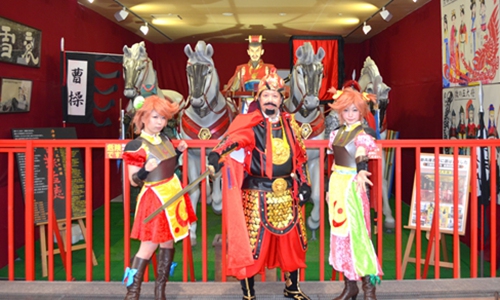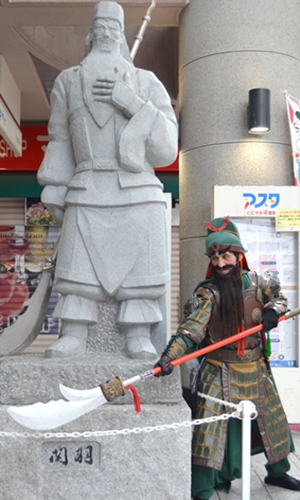HOME >> ARTS
Three Kingdoms exhibition to be held in Beijing after popular tour in Japan
Source:Global Times Published: 2020/1/21 10:38:40

A jade clothing composed of 2464 pieces of jade and excavated from the tomb of Cao Cao's father is on display at the Hubei Museum. Photo: cnsphoto
A special exhibition about the Three Kingdoms (220-280), the fruit of cooperation between China and Japan, will open on Thursday in Beijing after a tour in Japan that received a warm response.The exhibition, named "Three Kingdoms: Unveiling the Story," is seen as a combination of the two countries' cultures by insiders. Exhibits on display are from China and the Japanese side has given full play to the advantages of professional exhibitions, using one storyline to unveil the complicated history of that age.
The exhibition, showing 161 pieces of precious Chinese cultural relics including 42 first grade ones, is also considered as one of China's largest cultural relic exhibitions to have been held abroad in recent years, according to a report by the Paper.
The Three Kingdoms - called Wei, Shu and Wu - was a tripartite division of China that marked the end of the great Han dynasty. It was a bloody period as the country was torn apart by a power struggle between leaders Cao Cao (155-220), Liu Bei (161-223) and Sun Quan (182-252), who were also founders of the three kingdoms.

Three cosplayers play roles of Three Kingdoms before a temple of Cao Cao, the first emperor of Wei (220-265), in Kobe, Japan. Photo: cnsphoto
The Three Kingdoms has often been romanticized in literature and poetry, such as Romance of the Three Kingdoms, written by Luo Guanzhong in the Ming Dynasty (1368-1644).The influence of Romance of the Three Kingdoms is significant around East Asia, especially in Japan. A lot of Japanese anime and games are inspired by stories of the Three Kingdoms, so the exhibition was very popular in Japan and museums such as Tokyo National Museum were crowded each day during the show, the Paper said.

A man play a role of Guang Yu, a general in Three Kingdoms (220-280) in Kobe, Japan. Photo: cnsphoto
The report said that the exhibition, which was held in Japan until January 5, has seven chapters, including the roots of the three founders and tombs of the period, systematically restoring features of the Three Kingdoms.The exhibition selected the latest archaeological findings and research results from excavations of Cao Cao's mausoleum, Xinhua reported.
The audience can see a restored imitation of the tomb chamber after passing through a dark passage. Guan Jar, a first grade cultural relic excavated from the mausoleum that was on display in the chamber, is the earliest white porcelain product discovered so far, 300 years older than other similar relics.
Besides this, in the exhibition hall, 1,100 arrows suspended from the ceiling and 400 arrows on the opposite wall were displayed, replicating the battle scene on the water so that visitors can feel the density of arrows fired in the ancient battle, which also appeared in a classic campaign during the Three Kingdoms.
Posted in: ART,CULTURE & LEISURE